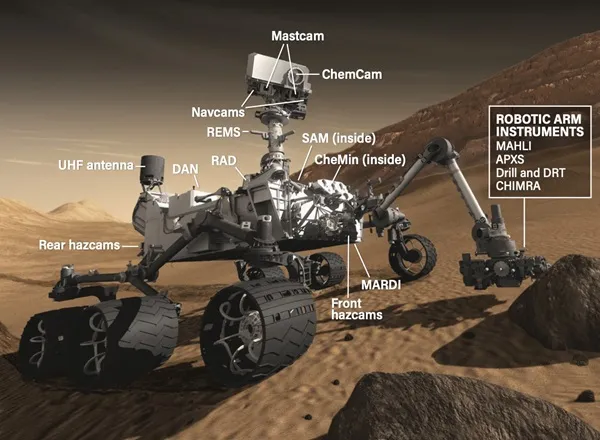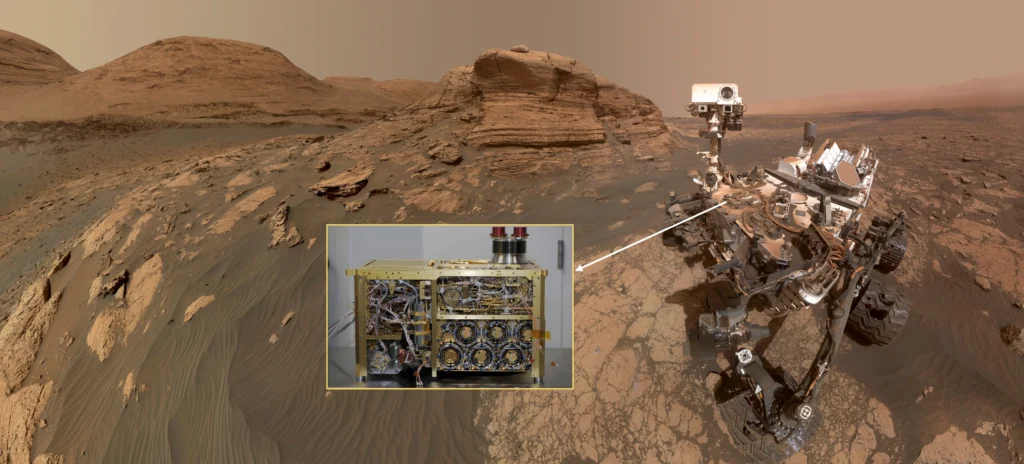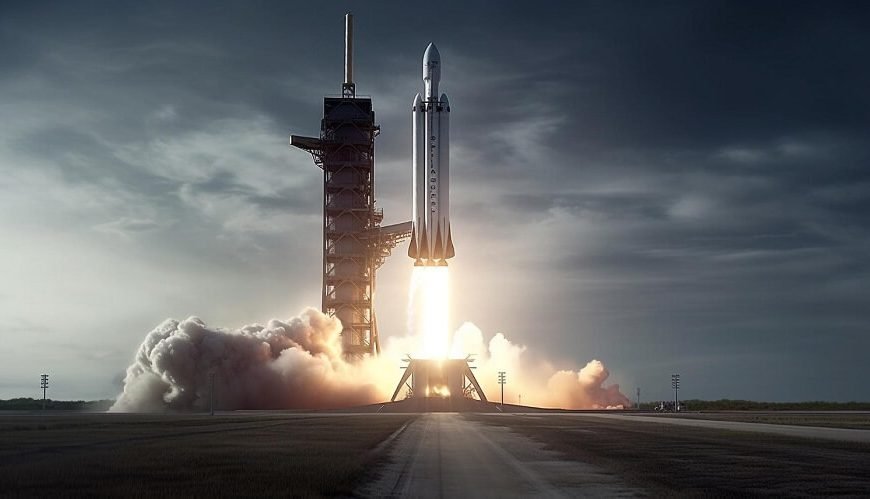What is Curiosity Rover: The Curiosity Rover is a robotic space exploration mission launched by NASA in 2011. The mission’s primary goal is to explore the Gale crater on Mars, which is believed to have once been a habitable environment. The rover has been exploring the Martian surface since August 2012, and its discoveries have been providing scientists with valuable information about the Red Planet’s geology, climate, and potential for supporting life. In this article, we will explore the Curiosity Rover’s history, design, and scientific achievements.
History of Curiosity Rover:

The Curiosity Rover mission was announced by NASA in 2003 as part of its Mars Exploration Program. The goal of the mission was to send a new generation of robotic explorers to Mars that would be capable of conducting detailed analyses of the Martian surface and subsurface.
The rover was designed and built by NASA’s Jet Propulsion Laboratory (JPL) in Pasadena, California, and was launched on November 26, 2011. It arrived on the surface of Mars on August 6, 2012, after a journey of nearly nine months.
Design of Curiosity Rover:
The Curiosity Rover is a large, six-wheeled vehicle that stands about 7 feet tall and weighs over 2,000 pounds. It is equipped with a variety of scientific instruments that allow it to analyze the composition of rocks and soil, measure the temperature and pressure of the atmosphere, and search for signs of organic molecules that could indicate the presence of past or present life on Mars.
One of the most important instruments on the Curiosity Rover is its Sample Analysis at Mars (SAM) instrument. SAM is capable of analyzing samples of Martian soil and rock for the presence of organic molecules and other compounds that could be evidence of past or present life on Mars.
The rover is also equipped with a variety of cameras, including a mast-mounted camera that can take high-resolution images of the Martian surface, and a ChemCam instrument that uses lasers to analyze the composition of rocks and soil from a distance.
Scientific Achievements of Curiosity Rover:

Since its arrival on Mars in 2012, the Curiosity Rover has made a number of important scientific discoveries that have expanded our understanding of the Red Planet’s history and potential for life.
One of the most significant discoveries made by the rover was the detection of methane in the Martian atmosphere. Methane is a gas that is produced by a variety of biological and geological processes, and its presence on Mars could be a sign of past or present microbial life.
The rover has also conducted extensive analyses of Martian rocks and soil, revealing a complex geologic history that includes the presence of ancient lakes and rivers. These discoveries suggest that Mars was once a much more hospitable environment than it is today, and that the planet may have supported microbial life in the past.
In addition to its scientific discoveries, the Curiosity Rover has also served as a technological demonstration platform for future Mars missions. For example, the rover’s landing system, which used a combination of parachutes and a rocket-powered sky crane to gently lower the rover to the Martian surface, could be used as a model for future Mars landings.
The Curiosity Rover mission has been an important step forward in our understanding of Mars and the potential for life beyond Earth. The rover’s scientific instruments have allowed it to analyze the Martian surface in unprecedented detail, revealing a complex geologic history and the potential for past or present microbial life. As the rover continues to explore the Red Planet, it is likely to make even more important discoveries that could shed light on the origins of life in the universe and the possibility of colonizing other planets.
Read Also: Dwarf galaxies
![]()






One thought on “What is Curiosity Rover ?”